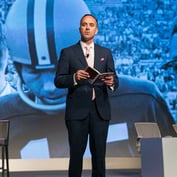The American Dream is alive and well, although it is an individual dream rather than a homogenized, collective one based around the central tenant of upward mobility. MetLife has released findings from its fifth annual MetLife Study of the American Dream, which found that the classical definition of the American Dream is being superseded by a “do it yourself” version that builds off of personal goals and values.
From September 26 to October 10, 2011, Penn Schoen Berland, a market research and consulting firm along with Strategy First Partners, another consulting firm, conducted 2,420 online surveys that spanned the general population. Its task? To gauge how and why the American Dream has morphed.
The study found that non-financial elements of the dream have become of important to those surveyed. Philosophical aspirations such as self-fulfillment and maintaining meaningful and rewarding relationships have eclipsed more utilitarian aspects of the dream such as financial and professional success. 70% of those surveyed said that you don’t have to be wealthy to achieve the dream; 65% said you don’t need to have a college degree; 71% and 70% respectively said marriage and children are not essential and 59% said that you don’t need to own a home.








 December 06, 2011 at 06:55 AM
December 06, 2011 at 06:55 AM










